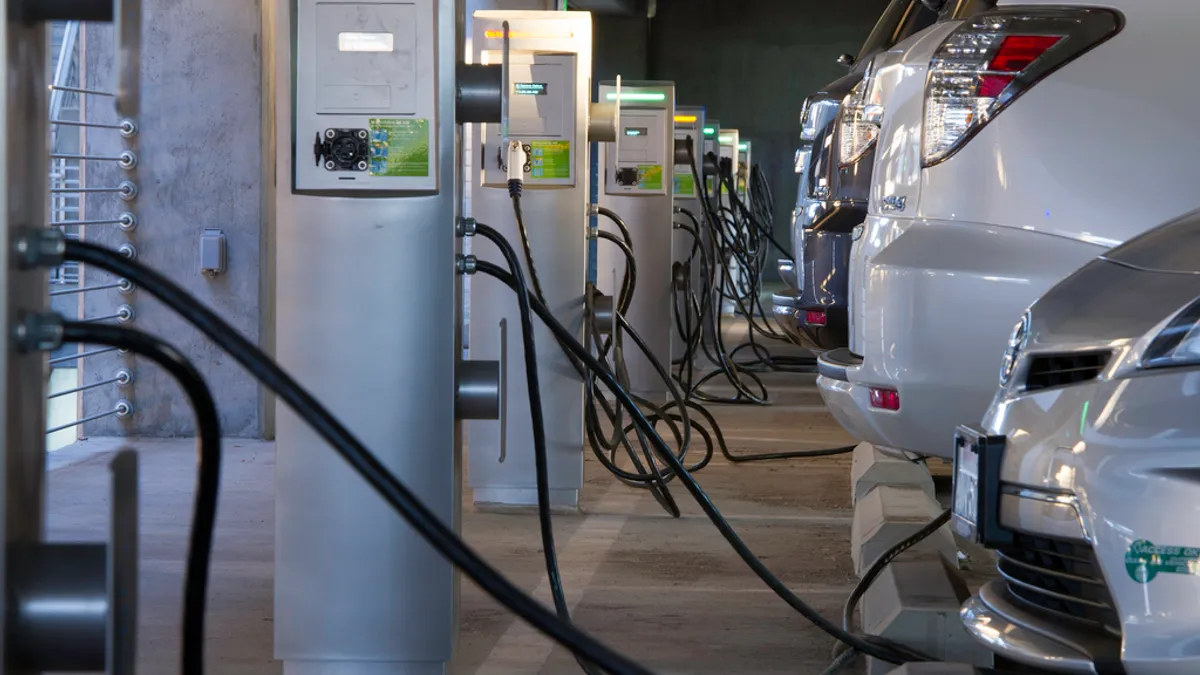The electric vehicle battery is going to school to learn how to give back.
NRG EVgo has formed a partnership with the University of California, San Diego (UCSD) to use the school’s large microgrid as a “testing ground,” in the words of Scott Fisher, director of alternative energy at NRG EVgo, for taking the next step in bidirectional EV batteries.
There has been a lot of talk of EVs serving as storage devices that could help utilities shift loads or shave peaks. In practice, that is not so easy to achieve. Among other issues, tapping into an EV battery as a grid storage device can shorten the life of a battery or void the warrantee. Manufacturers did not test and design EV batteries as grid-connected devices.
But the technical issues reside not so much in the chemistry of the battery but in the systems or software that controls how the battery is used. NRG, like several other companies, has been working on that aspect of the problem.
In 2013, EVgo and the University of Delaware, working with the PJM Interconnection, brought online the world’s first project where electric vehicles served as an official resource on a grid.
The two-way software developed at the University of Delaware was spun off by Professor Willett Kempton and is licensed in Europe by a company called Nuvve. In the U.S., EVGo is the licensee through a collaboration called eV2g.
It is that technology that EVGo is testing in San Diego. The test site is UCSD’s microgrid, one of the largest and most advanced in the world. It serves more than 45,000 people and generates more than 85% of the electricity used on campus via a combination of solar power, a fuel cell, a cogeneration plant and energy storage.
The UCSD microgrid, as state-owned property, also is not subject to local ordinances and permitting requirements, and because it is not a utility, it is not subject to California Public Utilities Commission regulations. The campus also has its own fire marshal and safety inspectors. In other words, it is a perfect testing ground.
Putting the theory to the test
Through the UCSD, NRG wants to test two aspects of the battery-to-grid concept. First it wants to look at the “use case for eV2g,” Fisher says.
On the East Coast, NRG has found a use for eV2g in the frequency regulation service that is one of the products available in PJM’s wholesale market.
California does not have a similar organized wholesale market, so NRG will be working with the state regulators to develop uses that work within California’s regulatory regime.
The second aspect of the partnership aims at making progress on interconnection standards. Part of that effort is working with auto manufacturers. EVGo will operate a fleet of bidirectional electric vehicles from Nissan and Honda, including a modified version of the Honda Accord Plug-in Hybrid.
One of the concepts being tested via the partnership is where to put the inverter that converts the stored DC power into AC power useful to the grid.
The Hondas will use onboard inverters supplied by Princeton Power Systems. The Nissans will not have onboard inverters, but will rely on inverters that are built into the charging stations.
Fisher says NRG expects the partnership to provide data and feedback to move the vehicle-to-grid concept forward and, after validating the concept, EVGo hopes to work with auto makers and be able to move the eV2g concept forward.
EVGo’s partnership with UCSD is governed by a memorandum of understanding with the university that includes another project that will collect data from the university’s 70-plus EV charging stations with the aim of making vehicle charging more efficient and mitigating customer charges.
The MOU helps satisfy part of a $100 million investment that NRG is required to make as part of a settlement with the state that goes back to claims related to the state’s 2001 energy crisis. The larger $100 million investment includes $5 million for research and development. The UCSD MOU, and other initiatives, will go toward satisfying that obligation. NRG declined to quantify the value of the UCSD MOU.
Fisher says the ultimate aim of NRG’s eV2g initiative is to develop “off the shelf products that work in California and other states and create value” for customers and other stakeholders.
From the manufacturer’s point of view, Ken Srebnik, head of corporate strategy for Nissan North America, says the company is looking for ways “to integrate the all-electric LEAF into homes, buildings and power grids to unlock new value that could provide future benefits to customers, businesses and utility companies alike.”






















